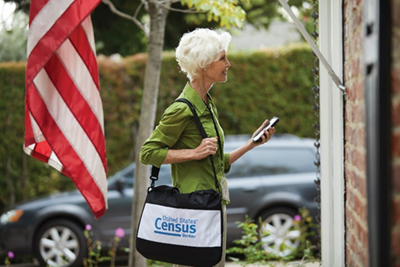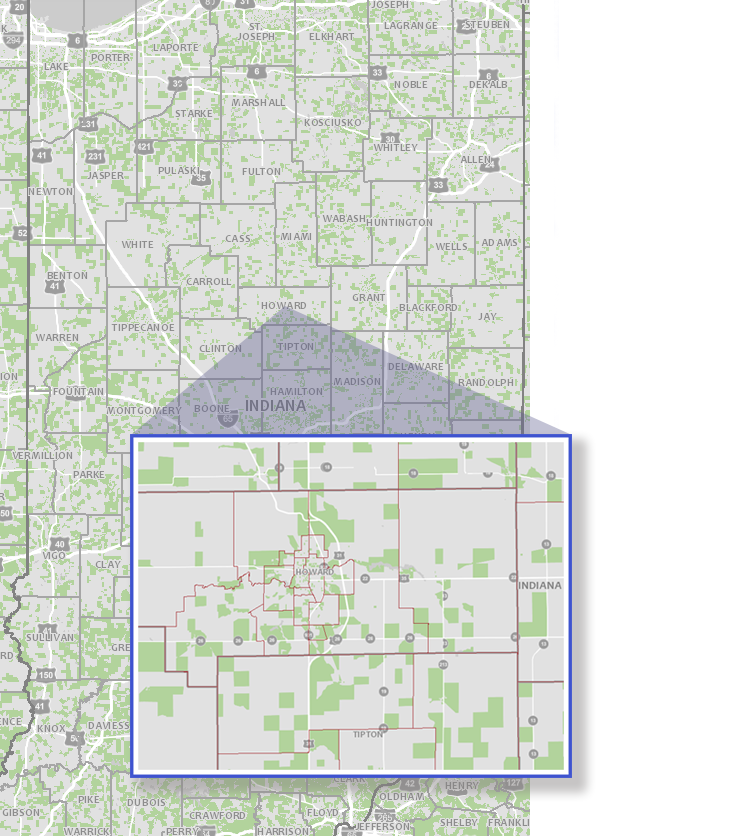They’re everywhere: The U.S. Census is afoot

Temporary Census field workers are conducting the groundwork to ensure an accurate count next April.
The foot soldiers of the largest domestic operation in the United States are out in force and their assignments are many. The U.S. Census Bureau has been hiring and deploying a veritable army of what many of us call “census takers.” In federal terms, they are temporary field workers who are conducting the groundwork to ensure an accurate count next April 1, 2020. It is called “Census Day,” but is in reality the culmination of many years of work.
As soon as Census 2010 was over, the Census Bureau began its planning for the next one. Those plans have been implemented and we are now—at least some of us—witnessing the work. August 2019 saw the deployment of canvassers (aka listers) spread out to do in-field address canvassing (AdCan). This phase of the work was all about verifying addresses to ensure every housing unit is on the census address list.

Specific areas within every county were selected for canvassing, with the listers identifying every place where people could live, comparing what they saw on the ground to the existing Census Bureau address list and then verifying, correcting or adding the address and location information. According to the Census Bureau, listers were to knock on doors at every structure and verify or update the information, as well as inquire about additional living quarters either in the structure or on the property.
Some examples of additional living quarters would be a large rural property that has a home that faces the road, but further in the back may be a trailer-type home or another structure used as housing. In an urban area, it could include a converted garage or basement.
The maps below are screenshots from an online web app that shows where address canvassing is or was occurring—you can zoom in to see street-level details within the app.

This part of Census 2020 was scheduled to wrap up by October 18. In the meantime, local census offices have begun opening throughout Indiana and the nation. Group Quarters Advance Contact operations will begin later in the fall in order to confirm the location of college dormitories, nursing homes, jails, prisons and other places where a large number of people live. It is important to note that the census counts people where they live most of the year. Full-time college students reside in their college community for at least eight months of the year, for example, and should be counted there.
Important dates
- January–September 2019: The U.S. Census Bureau opens 248 area census offices across the country. These offices support and manage the census takers who work all over the country to conduct the census.
- August 2019: Census takers begin visiting areas that have experienced a lot of change and growth to ensure that the Census Bureau's address list is up to date. This is called address canvassing, and it helps to ensure that everyone receives an invitation to participate in the 2020 Census.
- January 2020: The Census Bureau begins counting the population in remote Alaska.
- April 1, 2020: Census Day is observed nationwide. By this date, every home will receive an invitation to participate in the 2020 Census. Once the invitation arrives, you should respond for your home in one of three ways: online, by phone or by mail. When you respond to the census, you tell the Census Bureau where you live as of April 1, 2020.
- April 2020: Census takers begin visiting college students who live on campus, people living in senior centers, and others who live among large groups of people. Census takers also begin conducting quality check interviews to help ensure an accurate count.
- May 2020: The Census Bureau begins visiting homes that haven't responded to the 2020 Census to make sure everyone is counted.
- December 2020: The Census Bureau delivers apportionment counts to the president and Congress as required by law.
- March 31, 2021: By this date, the Census Bureau will send redistricting counts to states. This information is used to redraw legislative districts based on population changes.
More information is readily available on the Census in Indiana website (www.census.indiana.edu), as well as the recently released https://2020census.gov site.
